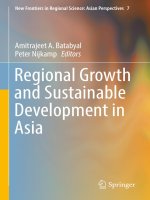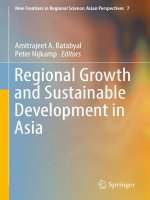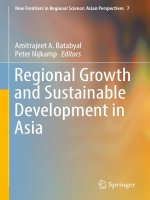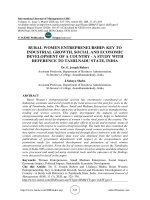Economic growth and economic development 94
Bạn đang xem bản rút gọn của tài liệu. Xem và tải ngay bản đầy đủ của tài liệu tại đây (69.44 KB, 1 trang )
Introduction to Modern Economic Growth
too general to achieve our objective. In particular, with this general structure, we
may not have balanced growth.
By balanced growth, we mean a path of the economy consistent with the Kaldor
facts (Kaldor, 1963), that is, a path where, while output per capita increases, the
capital-output ratio, the interest rate, and the distribution of income between capital
and labor remain roughly constant. Figure 2.11, for example, shows the evolution
of the shares of capital and labor in the US national income.
Labor and capital share in total value added
100%
90%
80%
70%
60%
50%
Labor
Capital
40%
30%
20%
10%
1994
1989
1984
1979
1974
1969
1964
1959
1954
1949
1944
1939
1934
1929
0%
Figure 2.11. Capital and Labor Share in the U.S. GDP.
Despite fairly large fluctuations, there is no trend in these factors shares. Moreover, a range of evidence suggests that there is no apparent trend in interest rates
over long time horizons and even in different societies (see, for example, Homer
and Sylla, 1991). These facts and the relative constancy of capital-output ratios
80









